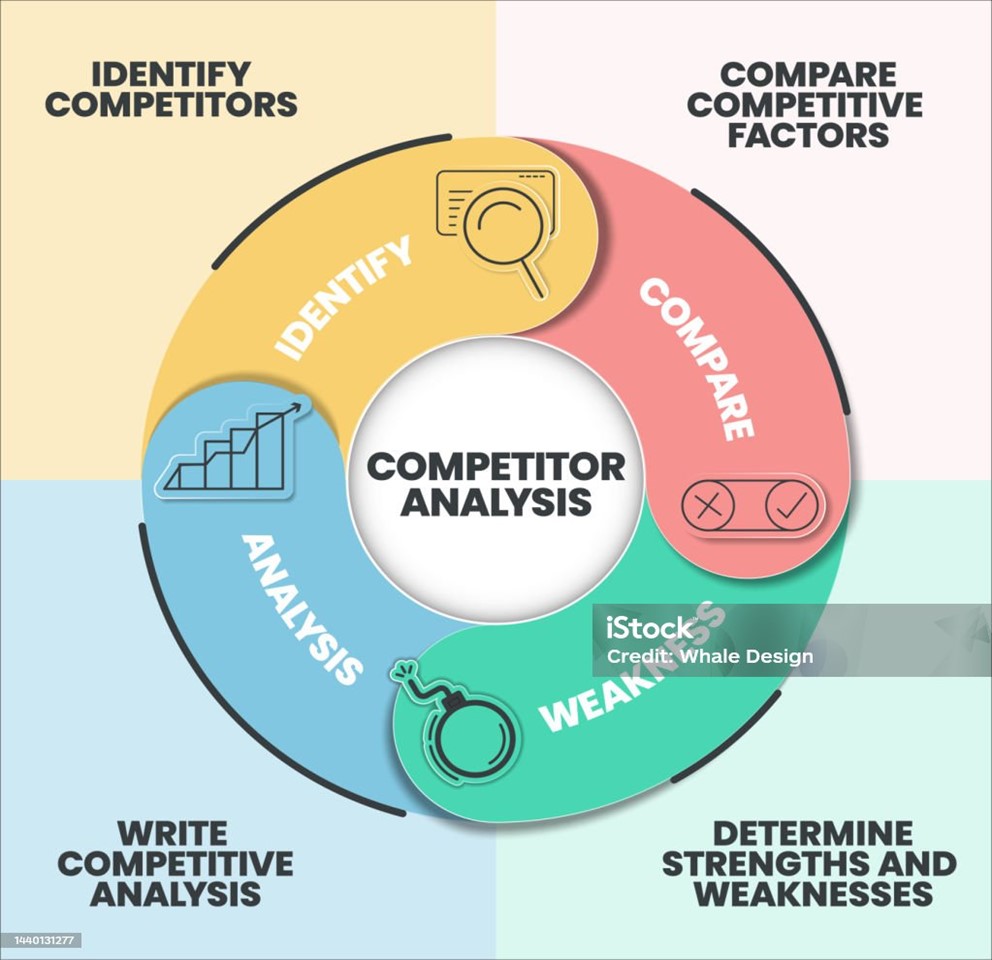The role of competitive analysis in business success

The role of competitive analysis in business success
by vivienne 11:46am Jan 04, 2025

In today’s fast-paced and ever-changing business environment, understanding your competition is more critical than ever. Competitive analysis—the process of identifying and evaluating competitors' strengths, weaknesses, strategies, and market positions—plays a pivotal role in shaping the trajectory of a business. By providing insights that guide decision-making, competitive analysis can be the key to achieving and maintaining business success.
Why Competitive Analysis Matters
1. Identifying Market Opportunities: Analyzing competitors allows businesses to pinpoint gaps in the market. For example, if competitors are neglecting a particular customer segment or failing to address specific needs, this opens up opportunities to introduce targeted products or services.
2. Enhancing Strategic Decision-Making: Competitive analysis informs critical decisions, such as pricing strategies, product development, and marketing initiatives. By understanding the competitive landscape, businesses can craft strategies that differentiate them from rivals and resonate with their target audience. 
3. Risk Mitigation: Staying aware of competitors' moves helps businesses anticipate potential threats. For instance, if a competitor is launching a new product, knowing this in advance allows a business to prepare countermeasures, such as adjusting pricing or launching a marketing campaign.
4. Staying Ahead of Industry Trends: Competitive analysis often reveals emerging trends in the industry. By tracking competitors’ innovations, partnerships, and market approaches, businesses can stay ahead of the curve and adapt to changes before falling behind.
Key Components of Competitive Analysis
1. Competitor Identification
Start by identifying who your competitors are. This includes:
Direct competitors: Businesses offering similar products or services.
Indirect competitors: Businesses that fulfill the same customer need in different ways.
2. SWOT Analysis of Competitors
A SWOT analysis (Strengths, Weaknesses, Opportunities, Threats) helps to evaluate a competitor’s position:
Strengths: What does the competitor do well? (e.g., strong brand, innovative products)
Weaknesses: Where do they struggle? (e.g., poor customer service, outdated technology)
Opportunities: Where can you capitalize? (e.g., underserved markets, rising consumer demands)
Threats: What challenges do they pose? (e.g., price wars, new market entries)
3. Competitive Positioning
Understand where competitors stand in the market relative to your business:
What is their market share?
What is their pricing strategy?
How do they position their brand and products?
4. Customer Feedback: Analyze reviews, testimonials, and feedback about competitors. This can provide direct insight into what customers like or dislike, offering a roadmap for improvement.
Benefits of Competitive Analysis
1. Differentiation: Knowing what sets competitors apart helps businesses refine their unique value proposition (UVP). Whether it’s superior quality, better pricing, or exceptional service, competitive analysis ensures businesses focus on what makes them stand out.
2. Improved Marketing: Competitive insights can guide targeted marketing strategies. For instance, understanding a competitor’s target audience and messaging helps businesses refine their campaigns to appeal to the same or underserved groups. 
3. Enhanced Innovation: By observing competitors’ innovations, businesses can identify areas for improvement or inspiration, leading to unique offerings that outpace the competition.
4. Sustainable Growth: Regular competitive analysis fosters long-term success by enabling businesses to adapt and thrive in a dynamic market, ensuring they are always a step ahead.
Challenges in Conducting Competitive Analysis
While the benefits are clear, competitive analysis also comes with challenges:
Access to Data: Competitors may not publicly disclose critical information.
Overemphasis on Competition: Focusing too much on competitors can divert attention from core business goals and customer needs.
Rapid Market Changes: In fast-moving industries, data can quickly become outdated.
To overcome these challenges, businesses should combine competitive analysis with internal assessments and continuously update their findings. 
Real-World Example: Netflix
Netflix’s success is a testament to the power of competitive analysis. When entering the streaming market, the company closely analyzed competitors like Blockbuster and emerging services. By identifying weaknesses in Blockbuster’s business model—such as high late fees and limited digital offerings—Netflix introduced a subscription-based, late-fee-free model and later pivoted to streaming. Their continuous analysis of competitors like Hulu and Disney+ enables them to innovate with exclusive content and advanced algorithms, keeping them a market leader.
Conclusion
Competitive analysis is not just a one-time exercise; it is a continuous process that ensures businesses remain relevant, competitive, and successful. By understanding the competition, businesses can make informed decisions, seize opportunities, and navigate threats with confidence. In the race to succeed, those who know their competitors best often come out ahead.






